Frankfort Formation
Late Ordovician (Caradoc)
Rome, NY
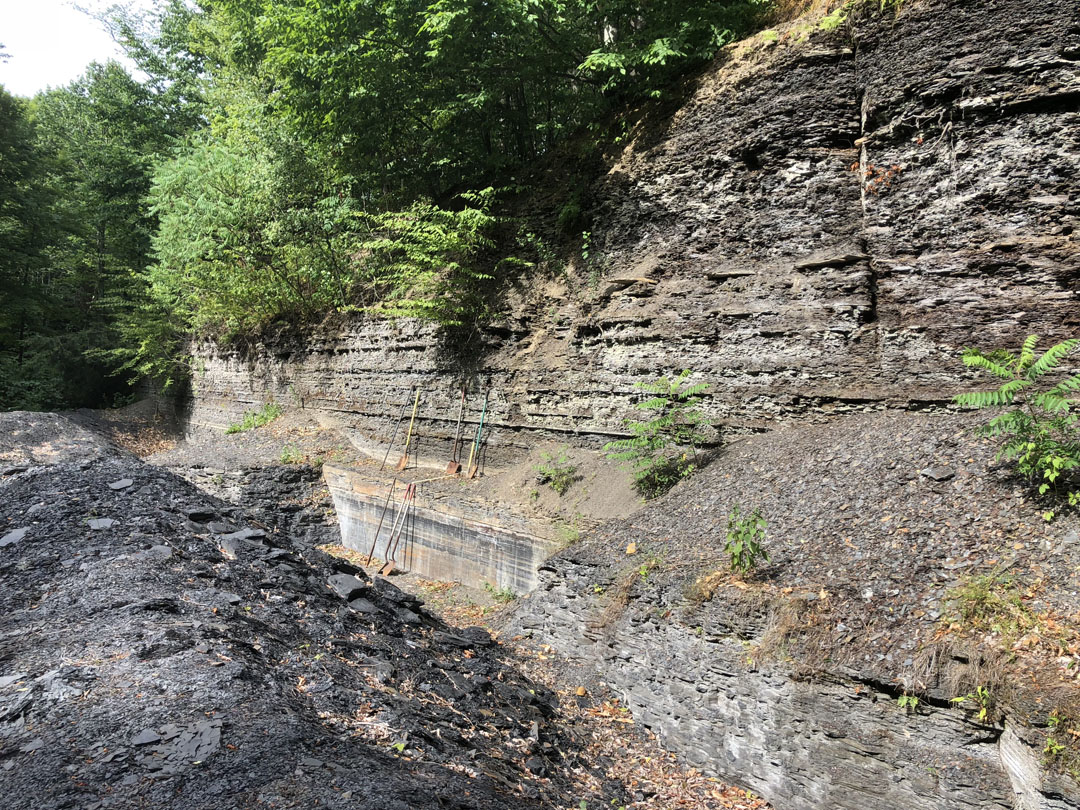
This quarry is one of only a few places on the planet where soft body preservation of trilobites has occurred. It was discovered in 1892 and excavated by Charles Beecher of Yale University.
Beecher died unexpectedly in 1904 and the exact location of the quarry was lost until rediscovered in 1984 by Tom Whitely and Dan Cooper. Although rediscovered, the quarry is still private.
The Original Beecher's Bed Quarry
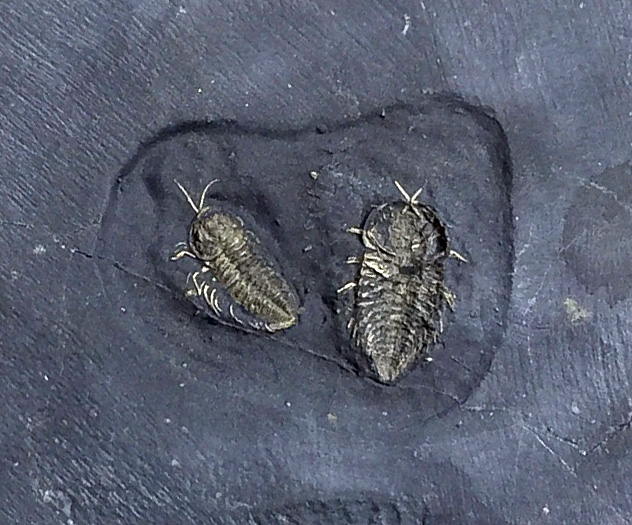
Pair of Pyritized Triarthus eatoni purchased at Tucson in 2017
Markus Martin, the leaseholder has developed the techniques to uncover the tiny pyritized trilobites using chemistry and air abrasion. The results are available for sale at the
Tucson Gem Mineral and Fossil Show held in January every year. I rarely buy fossils unless there is scant possibility of ever having the opportunity to hunt in a locality.
With the quarry being private, I considered Beecher's Bed as one of those places I would likely never get to visit let alone hunt, so a few years ago, I bought one of the trilobite plates in Tucson.
Gold Bugs Website
In the spring of 2018, quite unexpectedly, Markus offered up a handful of opportunities to dig in the quarry during the summer of 2018.
Being a "bucket list" item for me, I jumped on the chance. My opportunity came on a perfect day in late July of 2018.
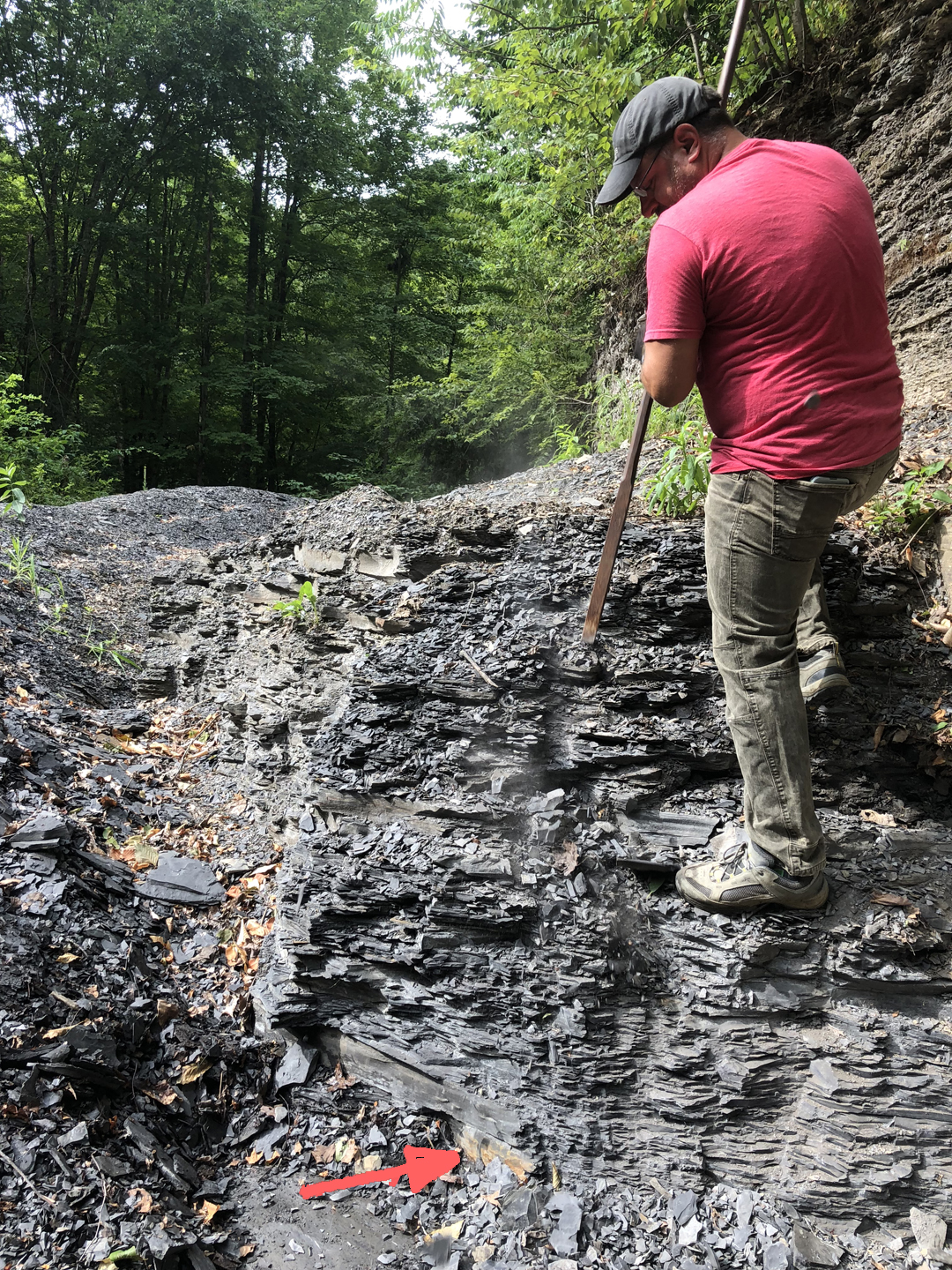
Digging down to the Trilobite Layer
The mound in the middle of the quarry face overlays the trilobite bed (see the red arrow). Markus left the overburden for me to remove to "add to the experience".
After about an hour of that, he offered to finish removing the overburden and encouraged me to hunt through the top of the mound as there might be other fossils in the higher layers.
He said that occasionally one can find "black smudges" that are the remains of animals similar to the Burgess shale fauna. I took him up on the offer!

Mound in the Middle
While Markus slaved away, I dismembered an area of the mound by hand, layer by layer in search of "black smudges", typical of soft tissue preservation.
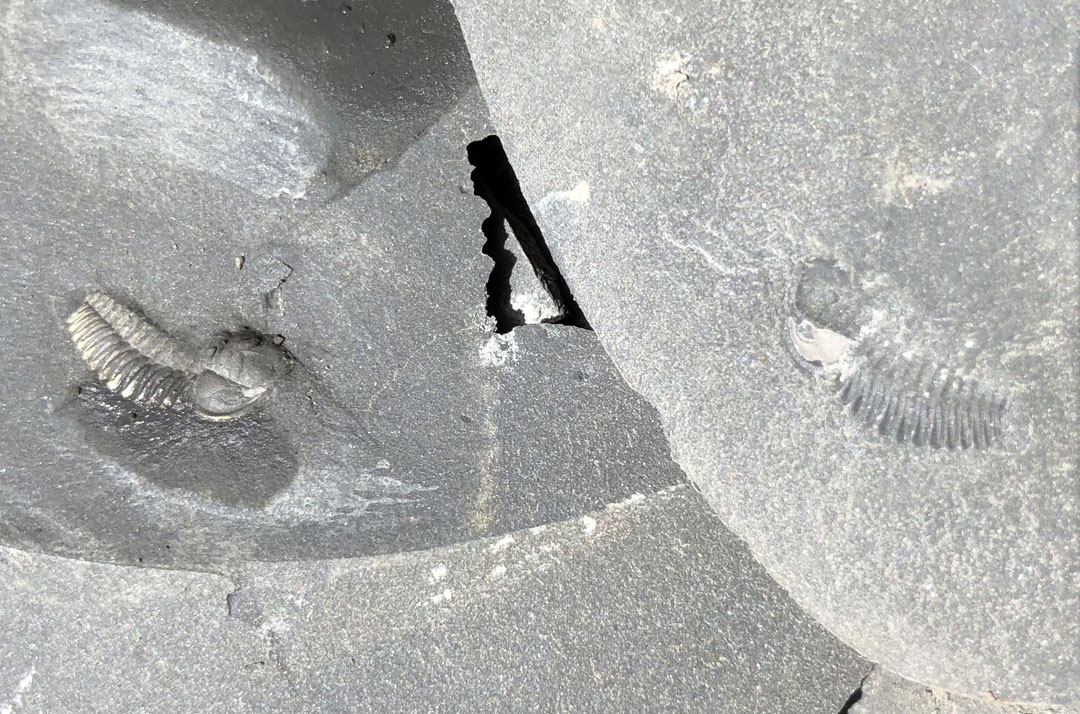
First Triarthus
Within the first few inches, I found a nice Triarthus trilobite, lying in a lovely transverse pose with both positive and negative plates. No legs are showing but they are likely in there.
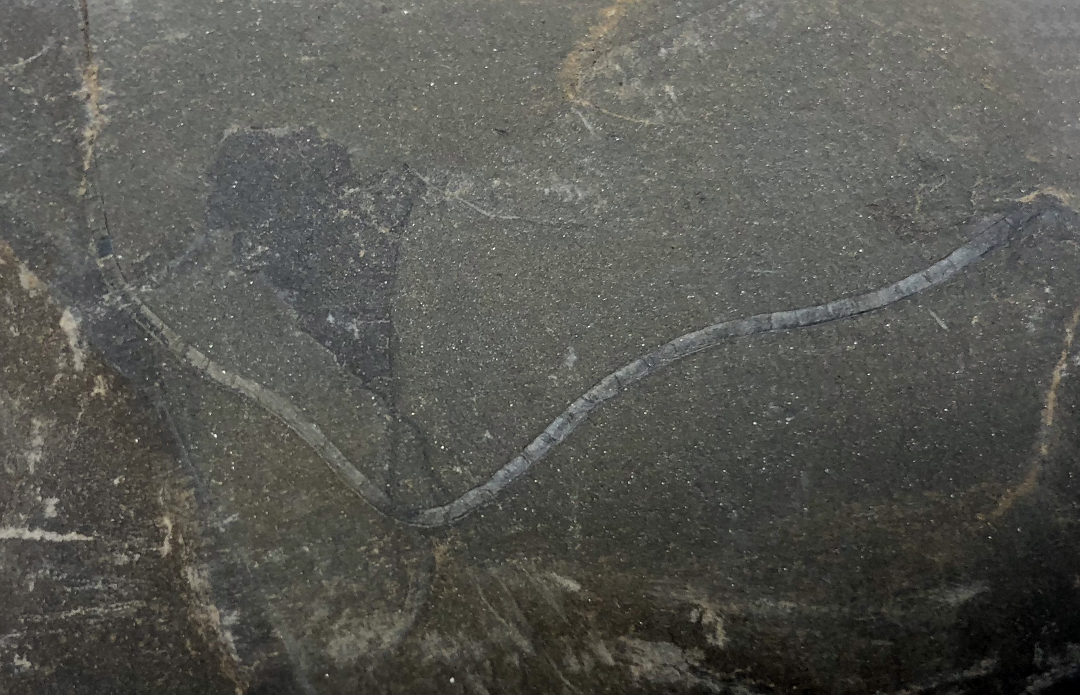
Worm Like Fossil
Continuing to pick apart the layers, I found three different examples of this worm like segmented fossil, although it may be a form of algae, similar to a coralline algae.
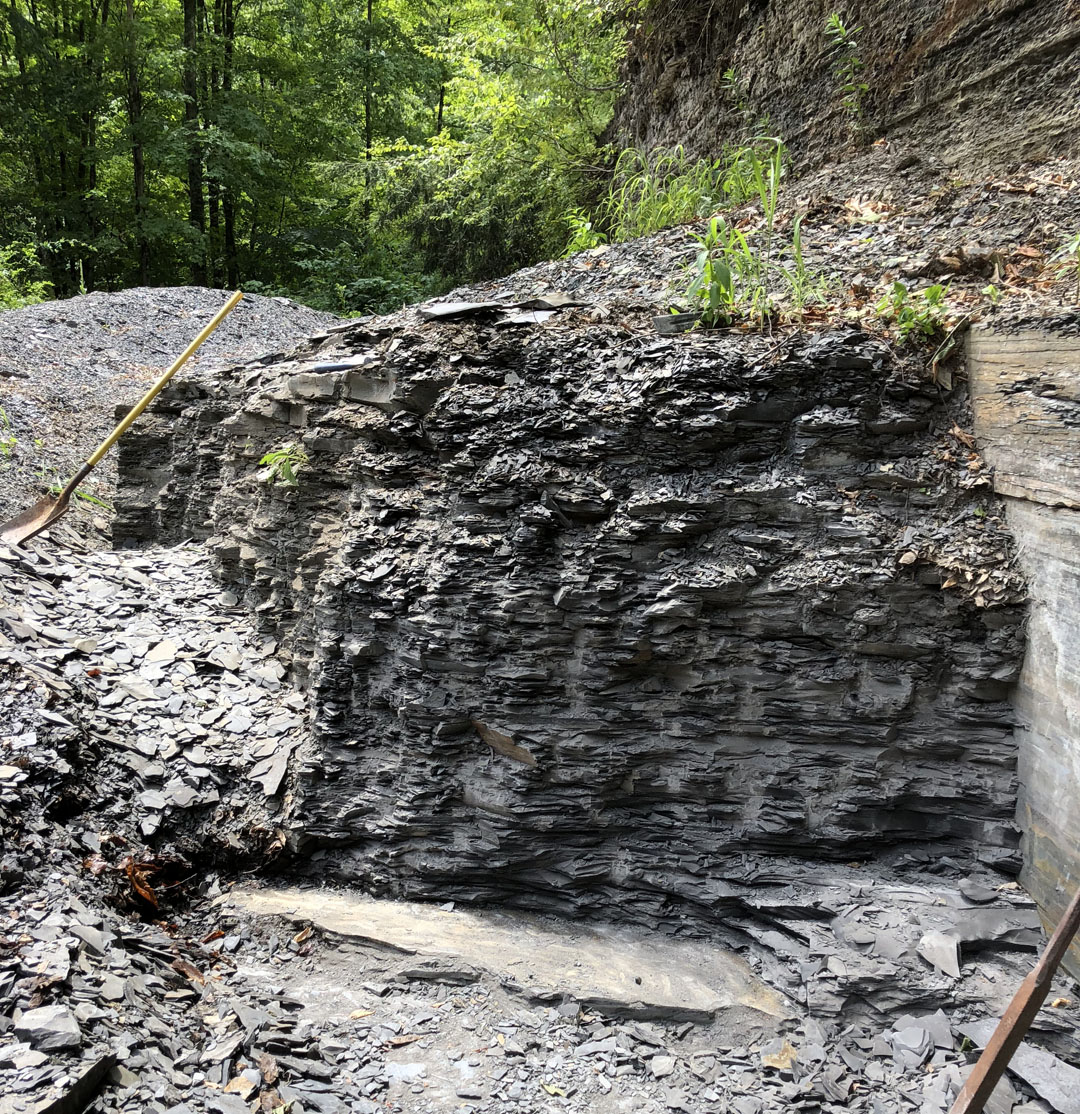
Exposed Trilobite Layer
Soon Markus had removed the overburden to just above the "Beecher's Bed" layer, exposing about 4 or 5 square feet of the trilobite bed.
Markus sawed through the back of the layer to free up the slab which we broke into smaller slabs for inspection and splitting.
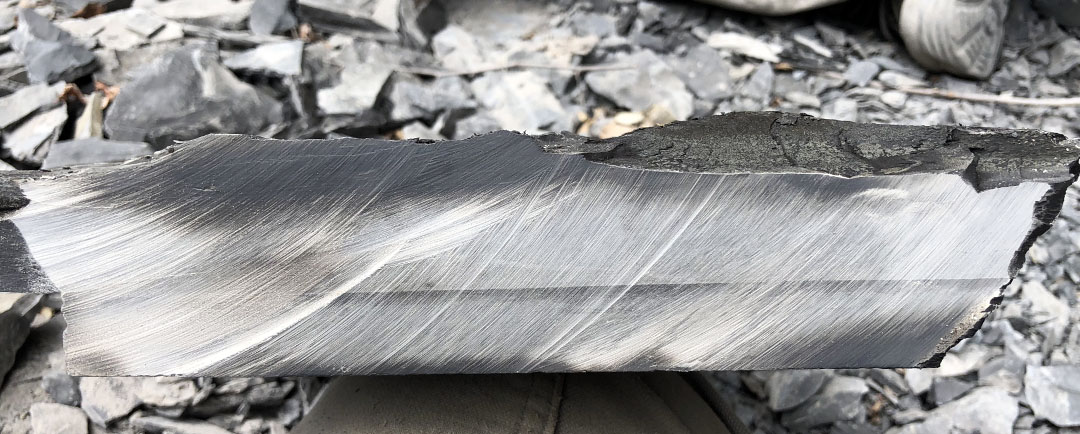
Beecher's Bed Slab
The black line is an ancient sea floor. Beecher's Bed lies in the 10 to 15 millimeters above the black line.
I used a geologist's chisel hammer to split the slabs just above the black line in search of the trilobites.
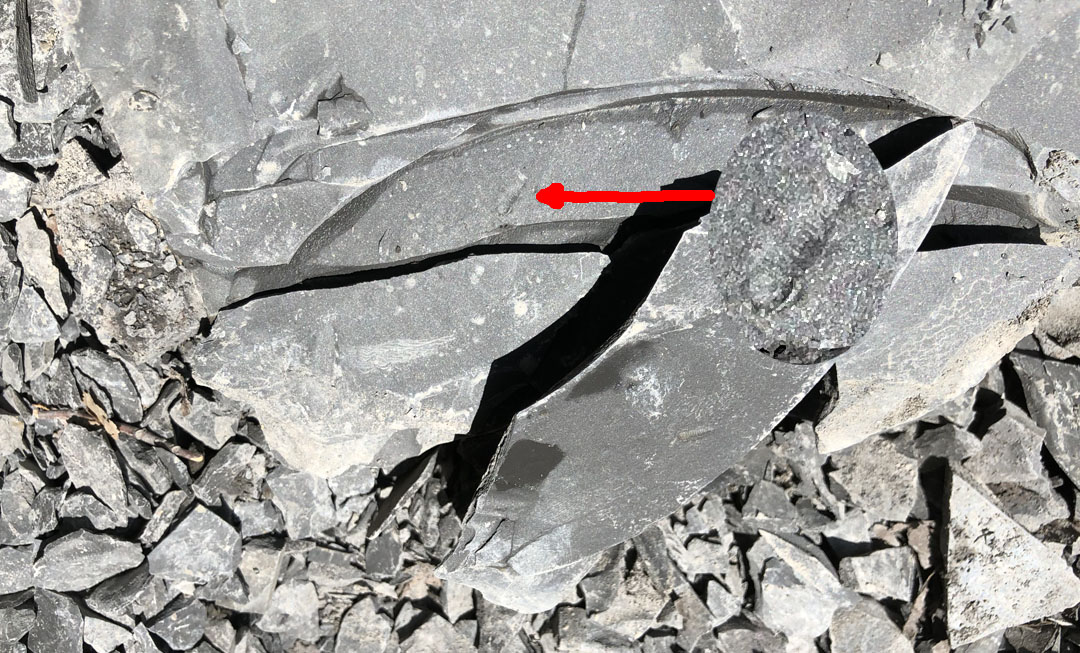
Typical Condition of Trilobite in Matrix
The trilobite Triarthus eatoni is relatively abundant in the layer. Markus warned me that it would not take long to find many trilobites.
Although abundant, they are not always easy to see. I had trouble seeing the signs of a buried bug, but Markus was quite good at pointing out those I had missed.
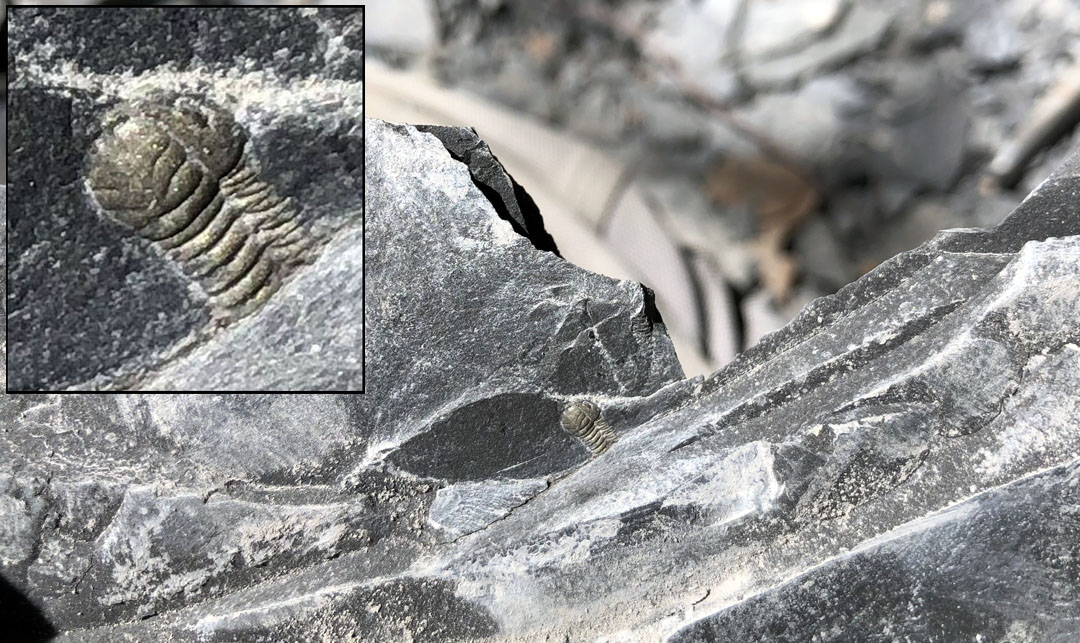
Trilobite #2
Although prettier to see the gold color, this split left the antennae on the counterpart. The "buried" bug will prep much better.
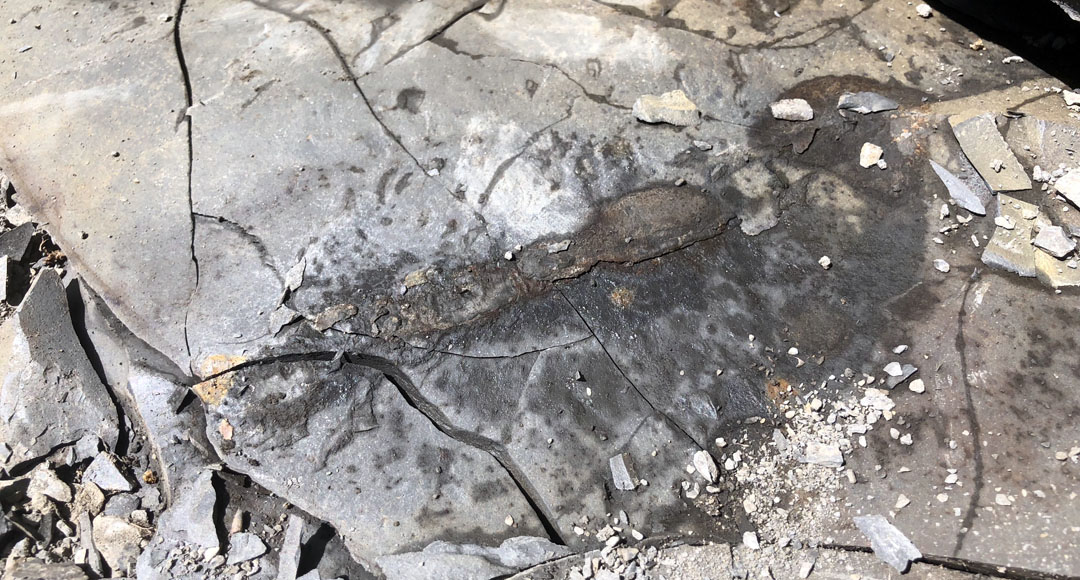
Algal Mat
This mess is indicative of an algal mat that has been preserved. The mat often contains often a "cluster" of Triarthus specimens.
We stopped any further splitting on this section of the slab as its better to explore the mat in the prep lab.
I like to collect all of the fauna found at a locality so I was keen to keep any other types of animals that could be found and there were a few other phyla represented.
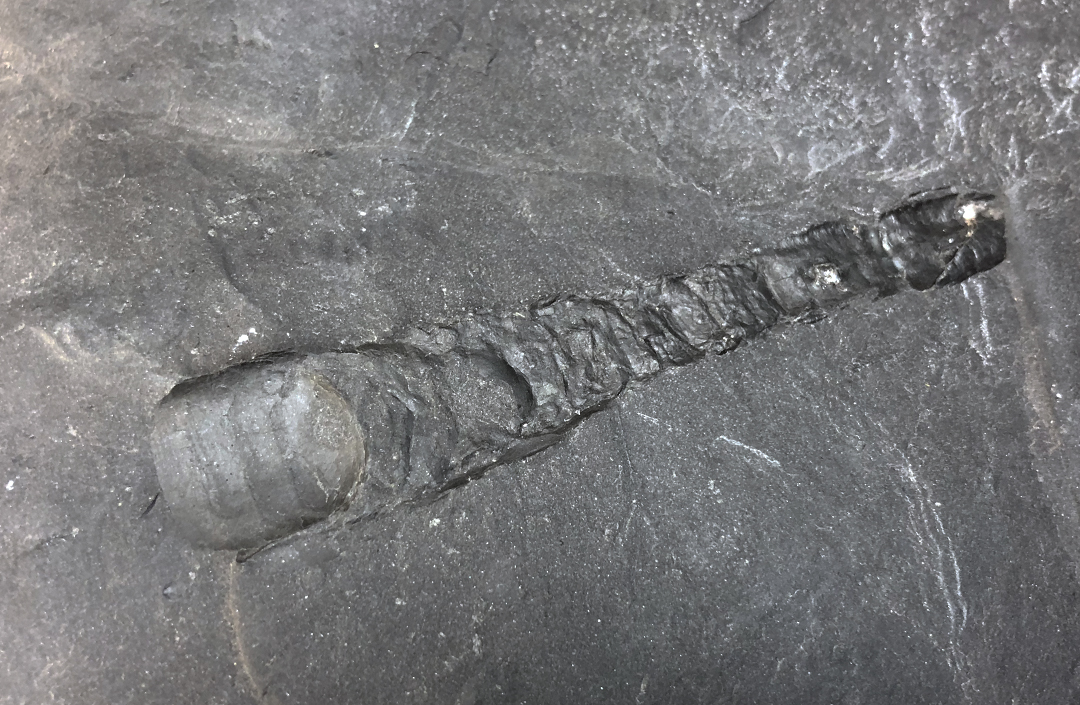
Orthoconic Nautiloid
Above and below the trilobite bed, I found several examples of nautiloids.
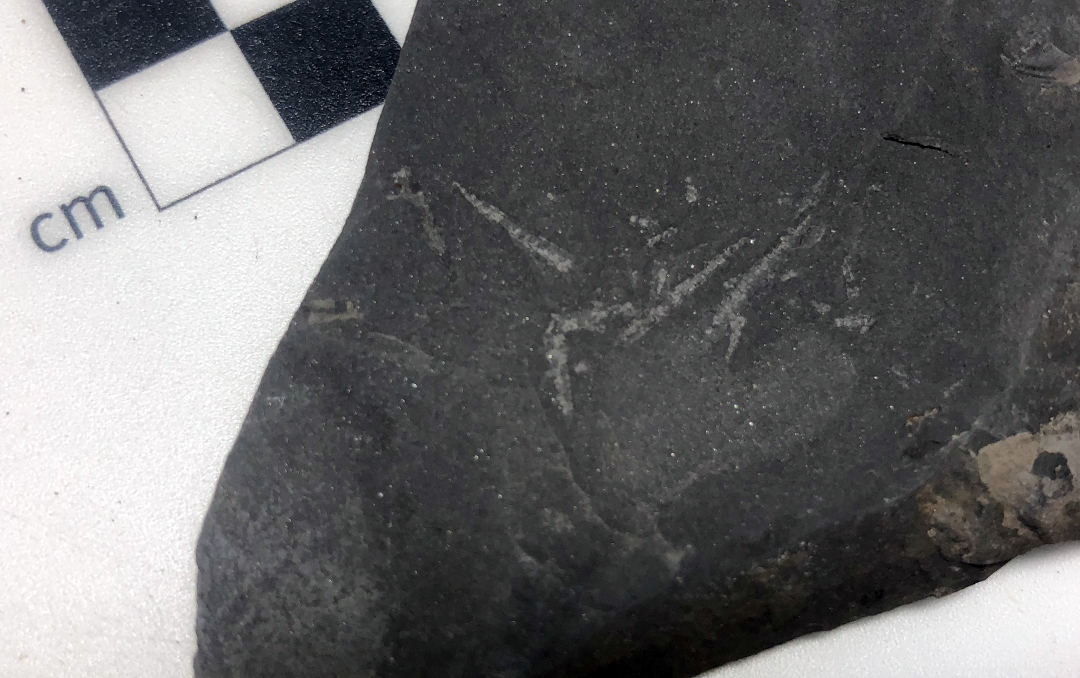
Graptolites
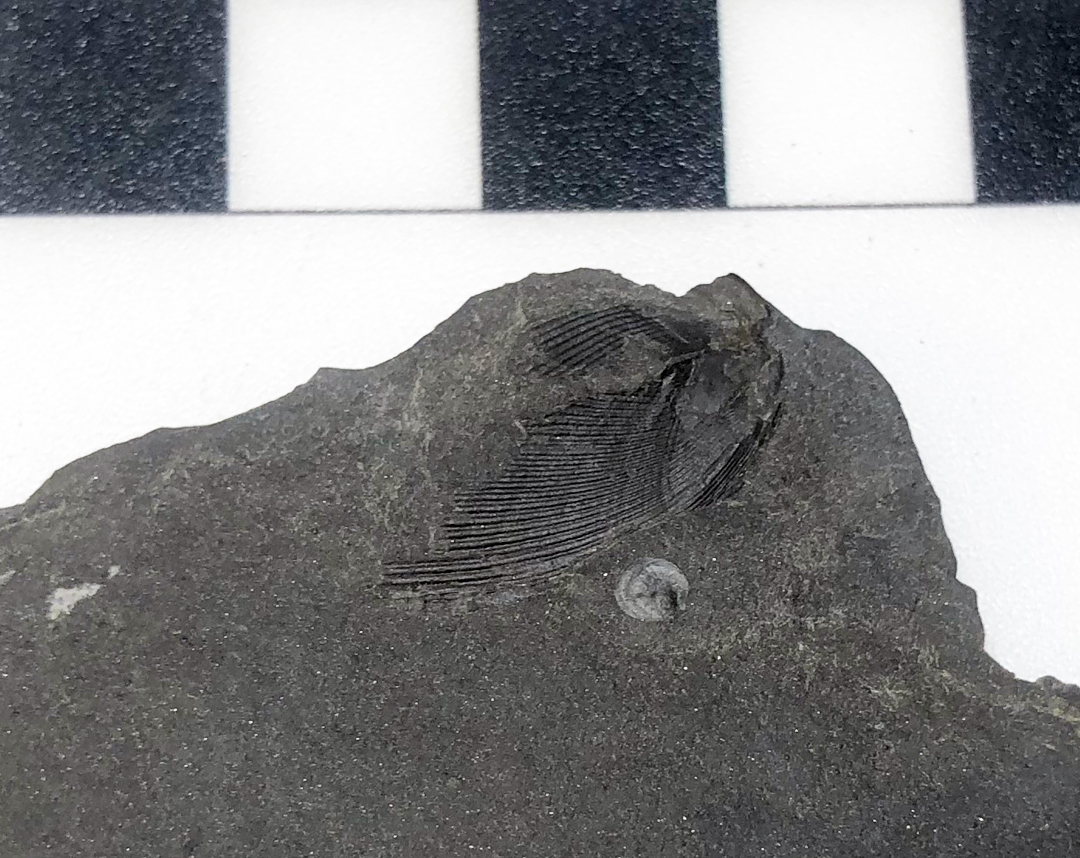
Bivalve or Brachiopod
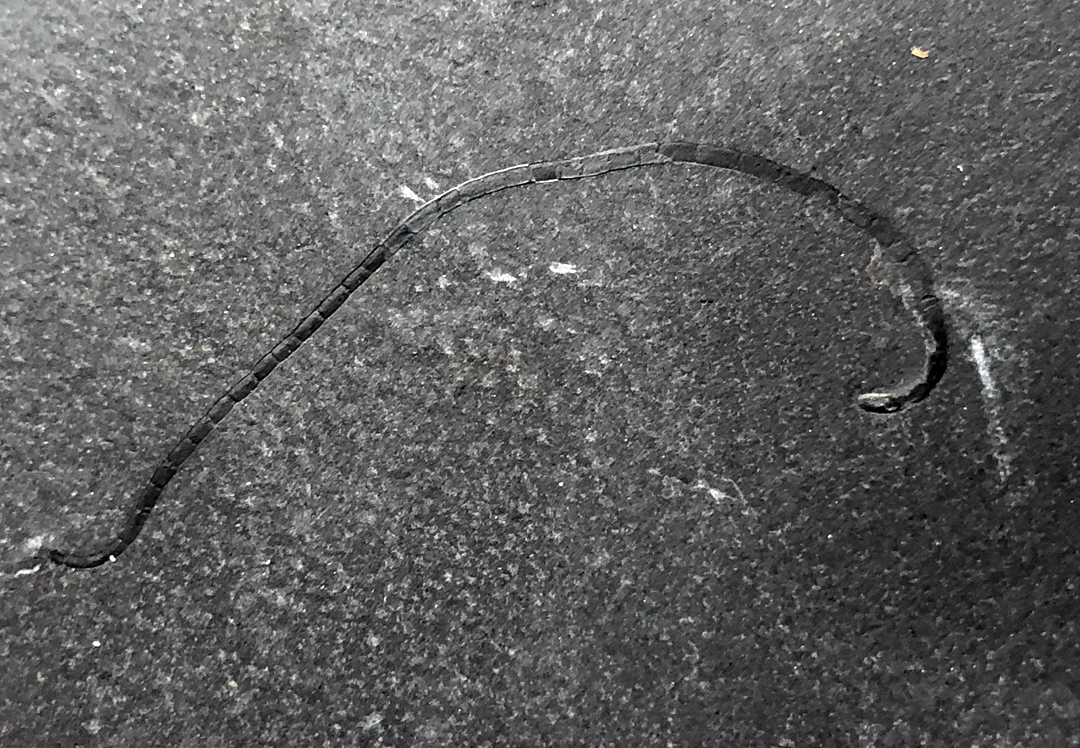
Another Worm Like Fossil
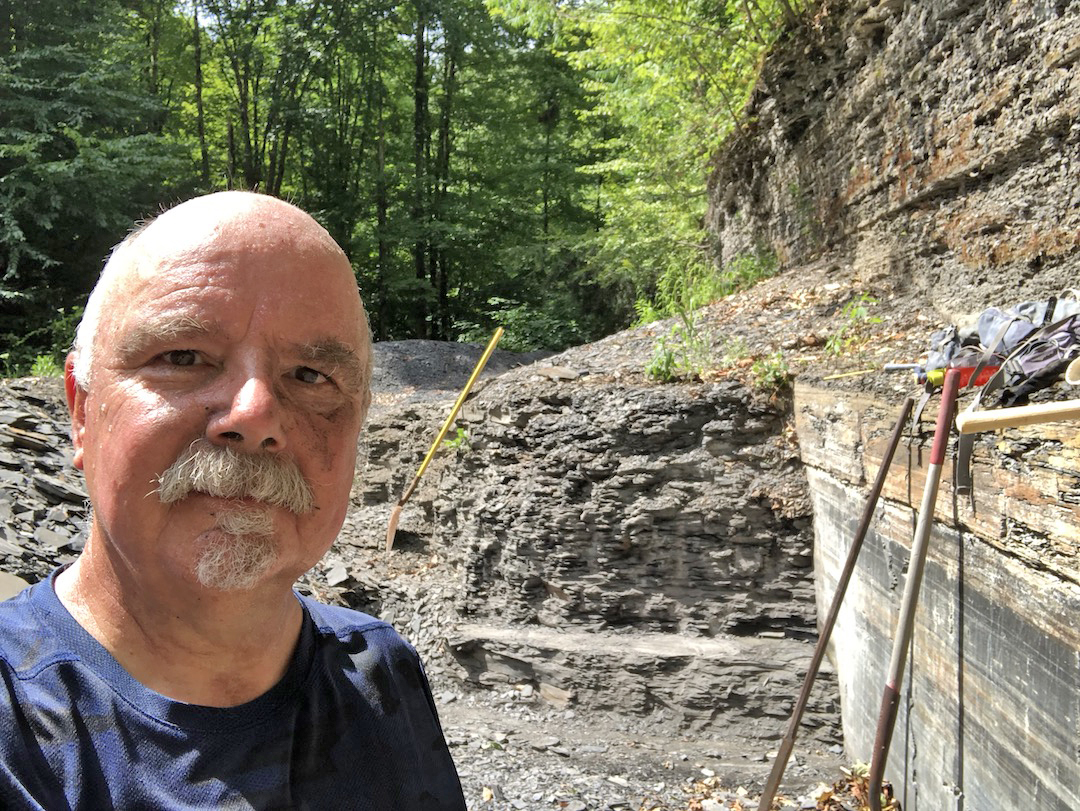
It was an epic experience for me. Although not pictured, we found several larger 2-3cm bugs both ventral and dorsal, as well as one in association with an ostracod.
I left all but one of the trilobite specimens with Markus to be properly prepped. Can't wait to see them.
[Other Sites ] [ Fossil Page ] [ Home ]